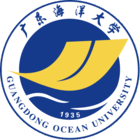详细信息
Mechanism of inactivation of Pseudomonas fluorescens by plasma-activated water based on active substances ( EI收录)
文献类型:期刊文献
英文题名:Mechanism of inactivation of Pseudomonas fluorescens by plasma-activated water based on active substances
作者:Huang, Duanying[1]; Sun, Qinchao[3]; Meng, Jiaojiao[1]; Xu, Jie[1]; Pan, Yanmo[1]; Zheng, Ouyang[1]; Liu, Shucheng[1,2]; Sun, Qinxiu[1,2]
机构:[1] College of Food Science and Technology, Guangdong Ocean University, Guangdong Provincial Key Laboratory of Aquatic Products Processing and Safety, Guangdong Province Engineering Laboratory for Marine Biological Products, Guangdong Provincial Engineering Technology Research Center of Seafood, Key Laboratory of Advanced Processing of Aquatic Product of Guangdong Higher Education Institution, Zhanjiang, 524088, China; [2] Collaborative Innovation Center of Seafood Deep Processing, Dalian Polytechnic University, Dalian, 116034, China; [3] Linyi Technician Institute, Linyi, 276005, China
年份:2024
卷号:96
外文期刊名:Innovative Food Science and Emerging Technologies
收录:EI(收录号:20243016752457)、Scopus(收录号:2-s2.0-85199128387)
语种:英文
外文关键词:Aquatic organisms - Chemical activation - Cleaning - Physicochemical properties - Redox reactions - Water treatment
外文摘要:The physicochemical properties of plasma-activated water (PAW) and the mechanism of PAW on the inactivation of Pseudomonas fluorescens were investigated. The results demonstrated that as activation time and output voltage increased, the electrical conductivity (EC) and oxidation-reduction potential (ORP) of PAW increased, while its pH decreased. When the activation condition was 20 kV for 30 min (PAW30), the content of active substances of the PAW was the highest (P 2?, NO3?, and H2O2 were high as 0.43 μg/mL, 2.46 μg/mL, and 0.837 μg/mL, respectively. After the PAW30 treatment for 30 min, the population of P. fluorescens was decreased by 2.27 log10 CFU/mL when the initial inoculation volume was 4.38 log10 CFU/mL. PAW oxidative stress disrupted the balance of the intracellular redox, ion concentration, and pH, leading to the breakdown of cell wall and membrane integrity, ultimately causing bacterial inactivation. These are important mechanisms by which PAW exerts its bactericidal effect. Industrial relevance: The aim of this study was to clarify the optimal preparation conditions for PAW, and its mechanism of killing P. fluorescens. These results contribute to our understanding of the control of spoilage organisms in aquatic products by PAW. In the raw material treatment stage of aquatic product processing, PAW can be used to clean and soak raw materials to kill microorganisms on their surfaces of raw materials. Therefore, PAW can be applied as a green cleaning technology to improve the hygienic quality of aquatic products. ? 2024
参考文献:
![]() 正在载入数据...
正在载入数据...


